Even touching water would leave poor Francesca feeling as if she was being burnt alive – but now, everything has changed.
A hairdresser who feared she would have to quit her career because of a skin complaint so severe that even touching water would feel as if she was being burnt alive has told how a £4.50 baby moisturiser has saved her.
Plagued by extreme contact dermatitis on her hands for five years – a complaint usually caused by something irritating the skin and sparking an allergic reaction – Francesca Rhodes, 30, had tried everything from steroid creams to UV therapy without success.
Her flesh remaining prone to cracking, weeping and bleeding, she feared she would need to stop hairdressing when, a year ago, on a client’s suggestion, Francesca, of Brigg, North Lincolnshire, tried a cheap baby moisturiser and, within two weeks, saw a miraculous change.
She said: “My skin ended up so raw that even water would burn like hell. Washing up, having a shower or having my hands in water all day was agony.
“I love my job, but I was in that much pain that every time I came home, I’d have to smother my hands in steroid cream and wrap them in a bandage, then wear cotton gloves to help it absorb quicker.
“My confidence was at an all time low, too. I felt disgusting and diseased. But now, life has completely changed for me. I still can’t quite believe it’s all thanks to a £4.50 moisturiser for babies.”
Francesca, who has a son, Charlie, six, with her steel worker husband Chris, 33, told how the first signs of dermatitis sprang up around five years ago, after she started itching between her fingers.
At first, she thought little of it, assuming it was simply a reaction to exposing her hands to water and chemicals, like those in hair dye, at work.
But, over the ensuring three weeks, her symptoms worsened – with over-the-counter products making no difference.
So, after consulting her GP, she was referred to a dermatologist at Lincolnshire’s Scunthorpe General Hospital.
“I was prescribed a steroid cream, which worked for a while, but then my skin almost got used to it and the symptoms flared up again,” she said. “So, I was given a different type of steroid cream, which I’d apply every night and bandage up my hands to keep the moisture in.
“But it soon stopped working again and we were back at square one. That rigmarole of going back and forth carried on for years.”
At her lowest ebb, Francesca even had daily sessions of phototherapy, which involves using UV light to treat a range of skin conditions. Yet again, though, it made no difference.
Eventually, doctors warned her that, if they could not find something soon to alleviate her symptoms, she could have to consider quitting her hairdressing career.
“I’d been a hairdresser for 14 years, so I couldn’t just walk away. There had to be something out there that could help,” she said.
Meanwhile, as time wore on with no sign of her symptoms improving, Francesca’s self-esteem was in tatters.
She continued: “I was so self-conscious of my hands. Doing hair meant I couldn’t even cover them up. If I ever went out, I’d wear a cardigan or jacket I could shove my hands in the pocket of.
“I remember paying for something one day when the cashier demanded to know what was wrong with my hands. I left the shop in tears. I’m sure she didn’t mean for it to sound nasty, but when you already feel down, a comment like that makes you paranoid that everyone is staring at you.”
At the end of her tether, Francesca feared she may never find anything to help.
Then, everything changed last year, when a client suggested she tried Childs Farm, a British skincare brand that uses naturally derived ingredients and essential oils.
While the products are mainly aimed at newborns, babies and children, Francesca figured that their gentle ingredients would not irritate her skin any further, so gave them a try.
And, amazingly, within two weeks of using the £4.50 cream, she saw a marked improvement.
Now, she applies it every day – and her little boy Charlie loves to use it, too.
She said: “It wasn’t an immediate, overnight change, but I knew I had to stick with it if I wanted results, so I pushed on and within two weeks, my skin was softer and smoother.”
She added: “Now I’ve only had one flare up in about a year, but it soon went away when I applied Childs Farm. It’s really reassuring to know I have something there that can help.
“Now I recommend it to everyone. It’s absolutely changed my life.”
For information, visit www.childsfarm.com
AUGUSTA, Ga. (AP) — Camilo Villegas wasn't just trying to refine his golf swing as he prepared to play in the Masters for the first time in nine years.
He was constantly checking the fine print on the ingredients in sunscreen. It reached a point a few weeks ago when the 42-year-old Colombian was trying three brands — one for his face, another for his arms, a third for his legs during practice rounds when PGA Tour players can wear shorts.
Nothing is left to chance.
“The first one I realized was more of a cosmetic. It didn't really work as strong as I wanted,” Villegas said. “I'm trying a Korean brand now, and that has worked pretty good.”
Skin cancer has his attention — along with many of his fellow golfers.
There seems to be a renewed emphasis on sun protection. Golfers are more exposed to the sun for longer periods of time than players in any other sport. The weekday rounds last five hours. Throw in an hour of practice before the round, sometimes after, and it adds up quickly.
“The amount of time we spend in the sun, you've got to protect yourself,” Villegas said. “The sun is burning you.”
No need telling Stewart Cink. He was walking off the practice range at Innisbrook Resort in Palm Harbor, Florida, last month when he was asked why sun protection was important to him.
“Well, as someone whose maternal grandmother passed away from melanoma, and someone who's out in the sun a whole lot and someone who already had a big chunk of stuff cut off the side of my face,” he said, pausing to smile. “It very important, not to mention what my wife is going through with her (breast cancer) treatment. It would be dumb not to.”
The American Academy of Dermatology estimates one in five Americans will develop skin cancer. The non-melanoma variety, such as basal cell carcinoma and squamous cell carcinoma, affects 3 million Americans a year.
Sunscreen is just one form of protection.
Stephanie Kyriacou of Australia has always been conscious about the effects of the sun, but a turning point during her amateur days was meeting a woman at home Down Under who invited her to a factory in Queensland.
That was her introduction to Australia-based “SParms,” which makes sun protection sleeves that have become enormously popular on the LPGA Tour.
The sleeves are made of high-tech fabric with an ultraviolet protection factor (UPF) of at least 50, meaning it blocks 98% of the sun's ray. The sleeves can go up the arm and wrap around the shoulder blade.
“Like a lot of girls out here, I'm aware of my skin,” Kyriacou said. “Sunscreen on my face and SParms on my arms. And I like to wear pants unless it's boiling hot.”
Now there are some 60 players at any given tournament wearing sun sleeves.
Kyriacou estimates she's in the sun for at least seven or eight hours a day, and the 23-year-old Aussie has been playing since she was 4.
That's typical of most tour players. They have spent practically their entire lives in the sun, facing the ultraviolet rays that can cause so much damage.
Exposure to the sun’s ultraviolet light raises the risk of skin cancer, the most common and one of the most preventable types of cancer. The American Academy of Dermatology recommends using a sunscreen with a sun protection factor (SPF) of 30 or higher and one that is “broad spectrum,” meaning it protects against both UVA and UVB rays.
“I don't think I wore sunscreen ever,” Cink said. “You know, we use to wear suntan lotion or oil that would intensify the sun so you would get tan. I don't think I wore anything protective at least until I got on tour.”
It wasn't until he was 45 that Cink fully understood the danger. He had a basal cell carcinoma removed from the side of his nose in 2018. And now it's not just any sunscreen he uses.
“I am not a big fan of chemical sunscreen,” he said, referring to the more common brands. “I like the physical barriers, the zinc oxide and titanium dioxide. I look for something that has a high concentration of those two. You can find them if you search.”
Villegas found it on an app called Yuka, which deciphers product labels and analyzes the impact of food and cosmetics. That includes sunscreen.
“It's not perfect. You've got to do some analysis,” Villegas said. “But it gives you options. It's not like it takes you to a website to purchase something — that would make me skeptical. You compare products yourself and do the analysis.”
Skin cancer doesn't discriminate, so golfers of color also are seeking protection.
Xander Schauffele has darker skin, the son of a Taiwanese-born mother and a European father (French and German). He also uses the Yuka app and lately has been going with a product he calls Mr. Seaweed.
“It has less toxic stuff, I've been told by an app,” he said. “Sprays are bad. Cream is the best thing. I look up all that stuff.”
Justin Thomas, a two-time PGA champion whose father and grandfather were club professionals, said he has always used sunscreen, usually whatever is handy. Now he pays closer attention, and for good reason.
He said his legs and neck used to get hit pretty hard by the sun when he was practicing for long hours. He previously had five small moles removed as a teenager. But a tiny one on the back of his left leg concerned him in 2019 because of the odd color.
It turned out to be early stages of melanoma — the most dangerous form of skin cancer but curable if caught early — and he had surgery in which doctors cut down to the fat to make sure they got it all. The surgery left a scar across the back of his calf.
“I was 26 and my doctors are telling me I was months away from being a patient in the hospital,” Thomas said.
He wore sunscreen before. Now he is reading labels, paying particular attention to SPF and getting out the message that “you need to wear sunscreen and you need to get checked.”
AP Medical Writer Carla K. Johnson contributed to this report.
AP golf: https://apnews.com/hub/golf
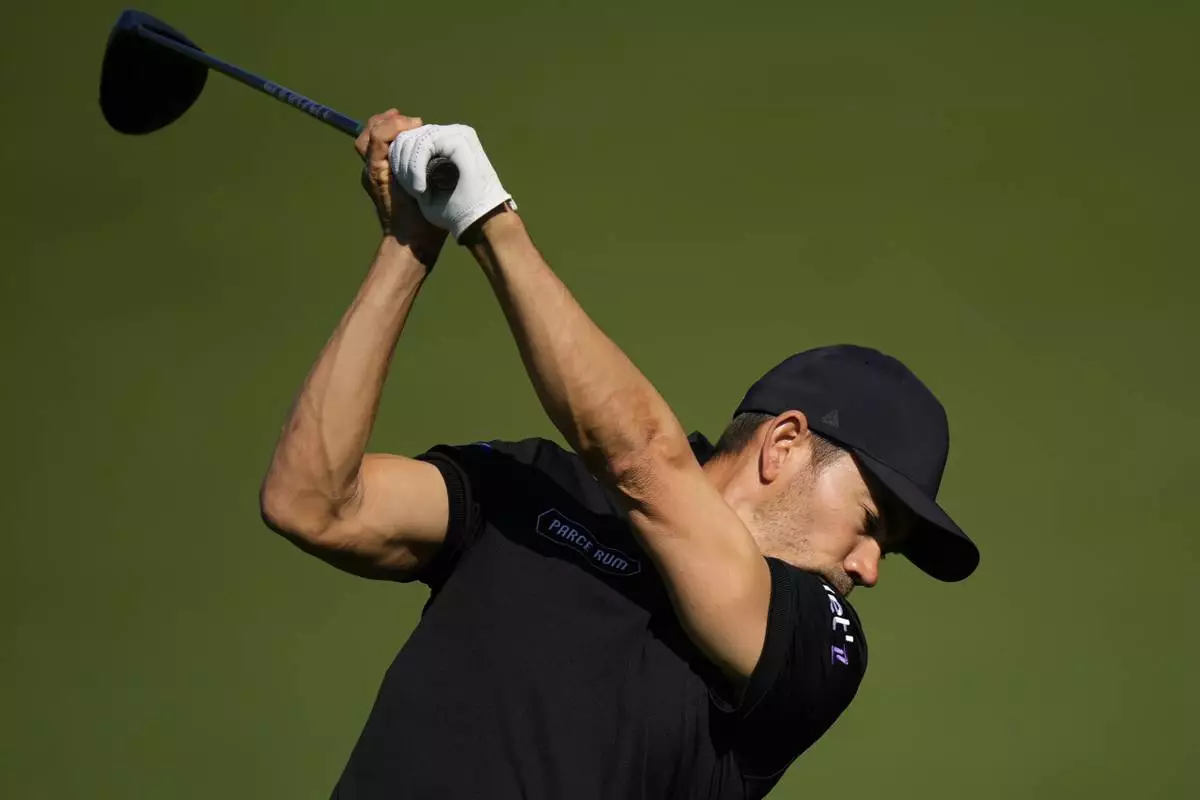
Camilo Villegas, of Colombia, hits on the practice range during a practice round in preparation for the Masters golf tournament at Augusta National Golf Club Monday, April 8, 2024, in Augusta, Ga. (AP Photo/Matt Slocum)

Camilo Villegas, of Colombia, catches a golf ball on the practice range during a practice round in preparation for the Masters golf tournament at Augusta National Golf Club Monday, April 8, 2024, in Augusta, Ga. (AP Photo/Matt Slocum)
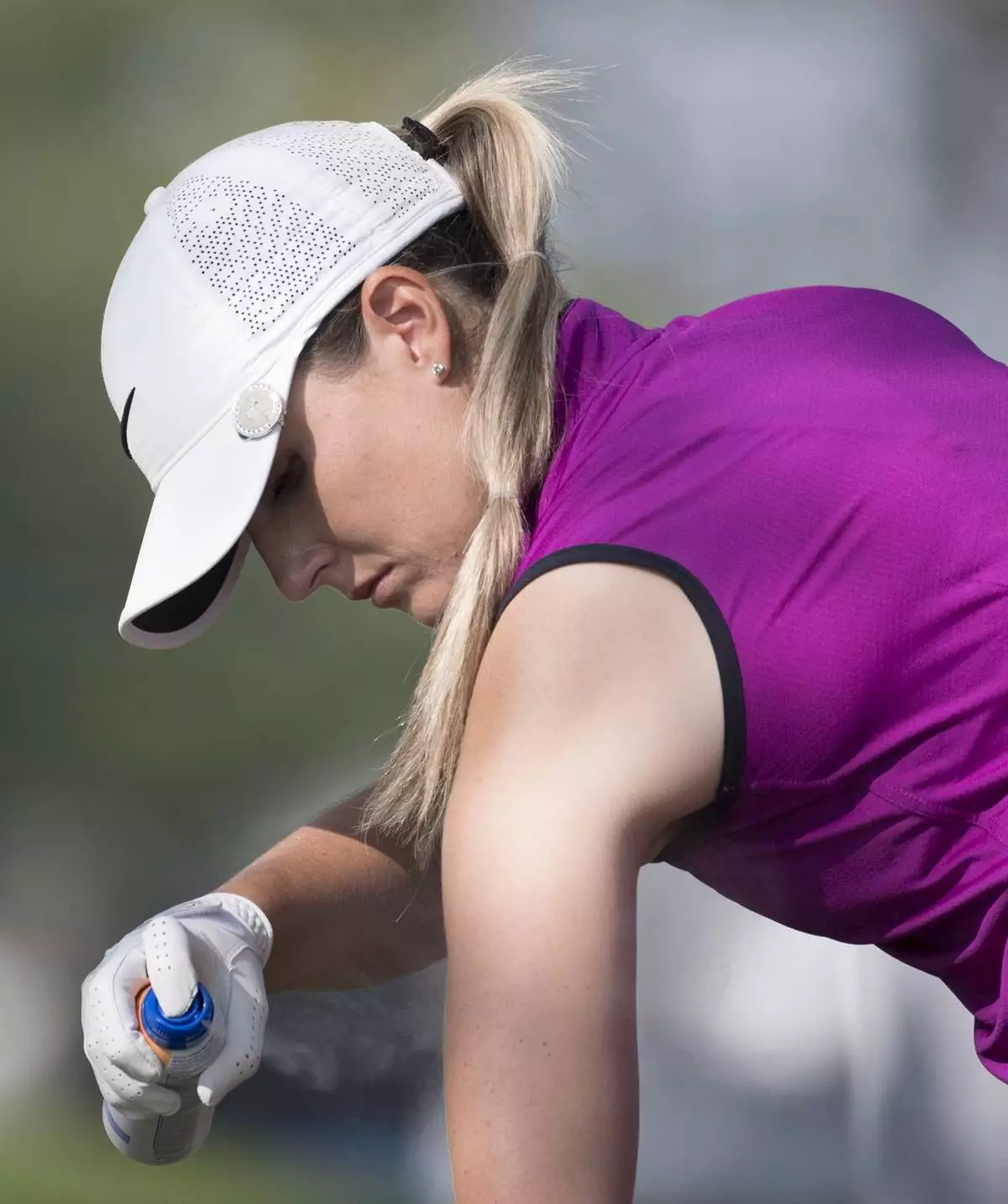
FILE - Megan Osland, of Canada, sprays on sunscreen during the first round of the Women's Canadian Open golf tournament in Regina, Saskatchewan, Thursday, Aug., 23, 2018. Golfers are in the sun as much if not more than players in other sport. It can be as many as eight hours a day. And there is renewed emphasis on protecting their skin. (Jonathan Hayward/The Canadian Press via AP, File)
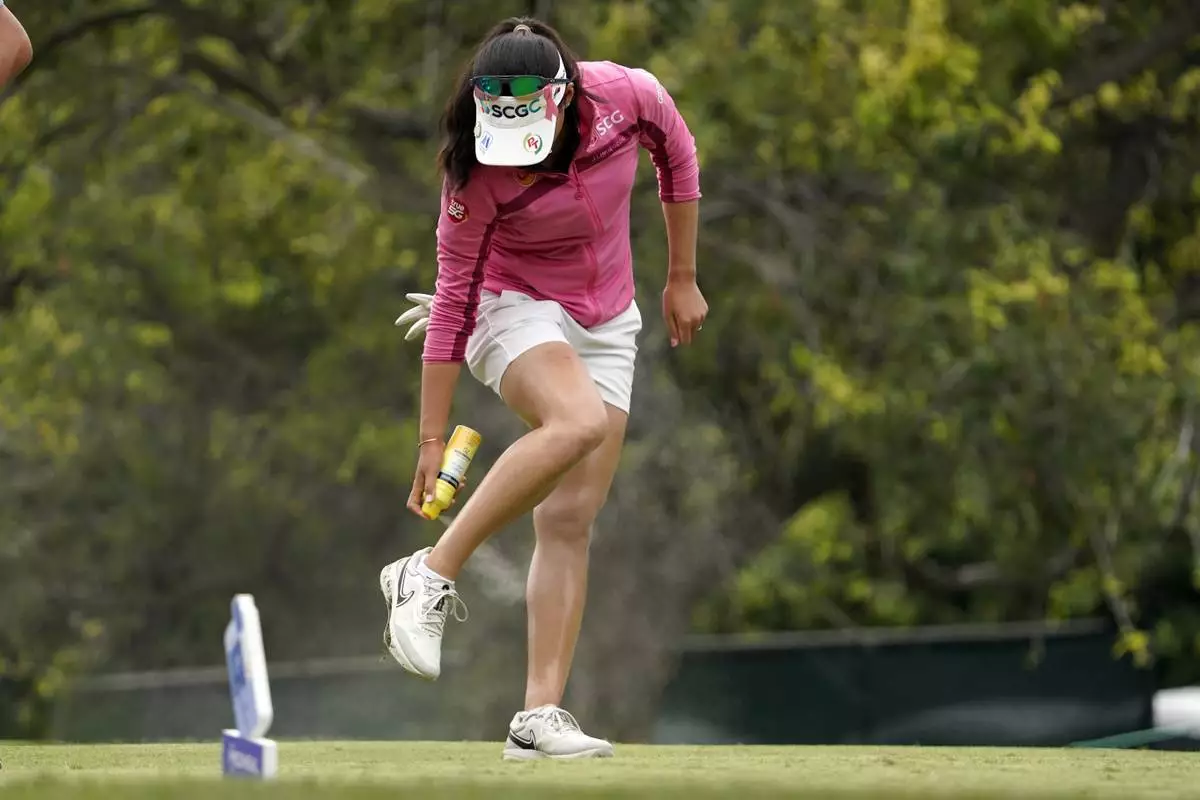
FILE - Atthaya Thitkul, of Thailand, sprays her legs with sunscreen on the third hole during the first round of the MEDIHEAL Championship golf tournament Thursday, Oct. 6, 2022, in Somis, Calif. Exposure to the sun’s ultraviolet light raises the risk of skin cancer, the most common and one of the most preventable types of cancer. (AP Photo/Mark J. Terrill, File)
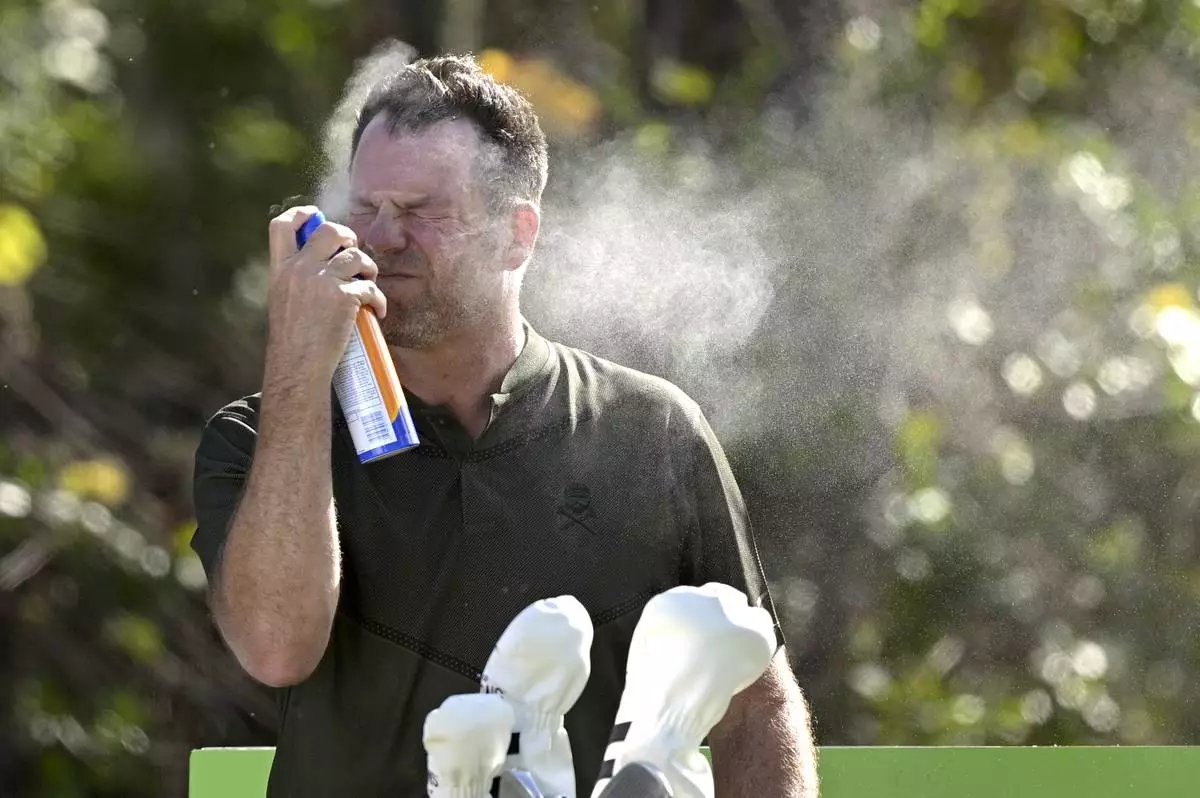
FILE - Mike Flaskey, CEO of Diamond Resorts International, sprays himself with sunscreen before hitting his tee shot on the second hole during the final round of the Tournament of Champions LPGA golf tournament, Sunday, Jan. 24, 2021, in Lake Buena Vista, Fla. (AP Photo/Phelan M. Ebenhack, File)
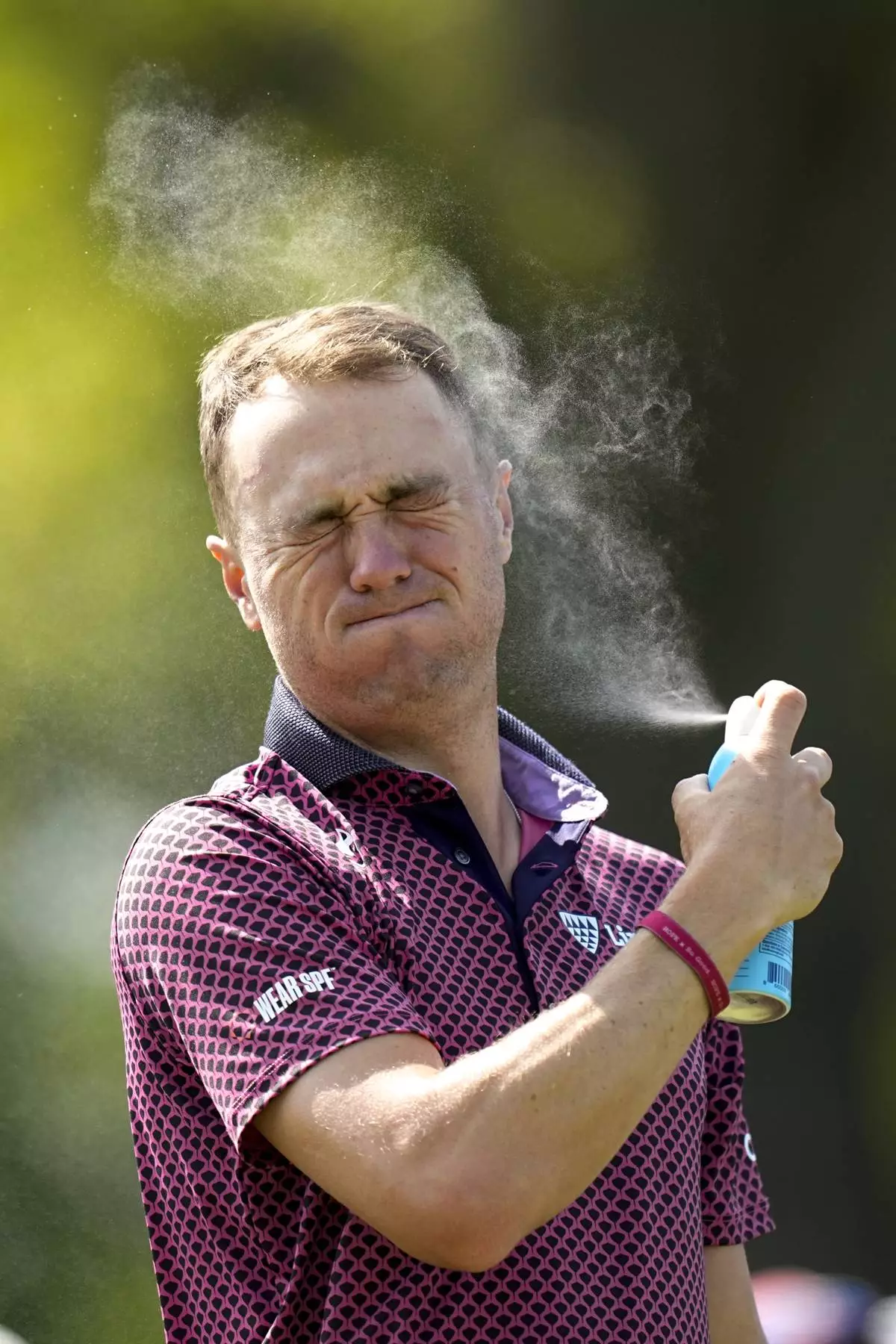
FILE - Justin Thomas applies sunscreen on the 11th hole during the first round of the PGA Championship golf tournament at Oak Hill Country Club on Thursday, May 18, 2023, in Pittsford, N.Y. Thomas, a two-time PGA champion whose father and grandfather were club professionals, said he has always used sunscreen, usually whatever is handy. Now he pays closer attention, and for good reason.(AP Photo/Eric Gay, File)

FILE - Stephanie Kyriacou, of Australia, tees off on the 13th hole during the first round of the ShopRite LPGA Classic golf tournament, Friday, June 10, 2022, in Galloway, N.J. Kyriacou has always been conscious about the effects of the sun. (AP Photo/Matt Rourke)

FILE - Jordan Spieth applies sunscreen during the first round of the SMBC Singapore Open golf tournament at the Sentosa Golf Club's Serapong Course Thursday, Jan. 28, 2016, in Singapore. Golfers are in the sun as much if not more than players in other sport. It can be as many as eight hours a day. And there is renewed emphasis on protecting their skin. (AP Photo/Wong Maye-E, File)
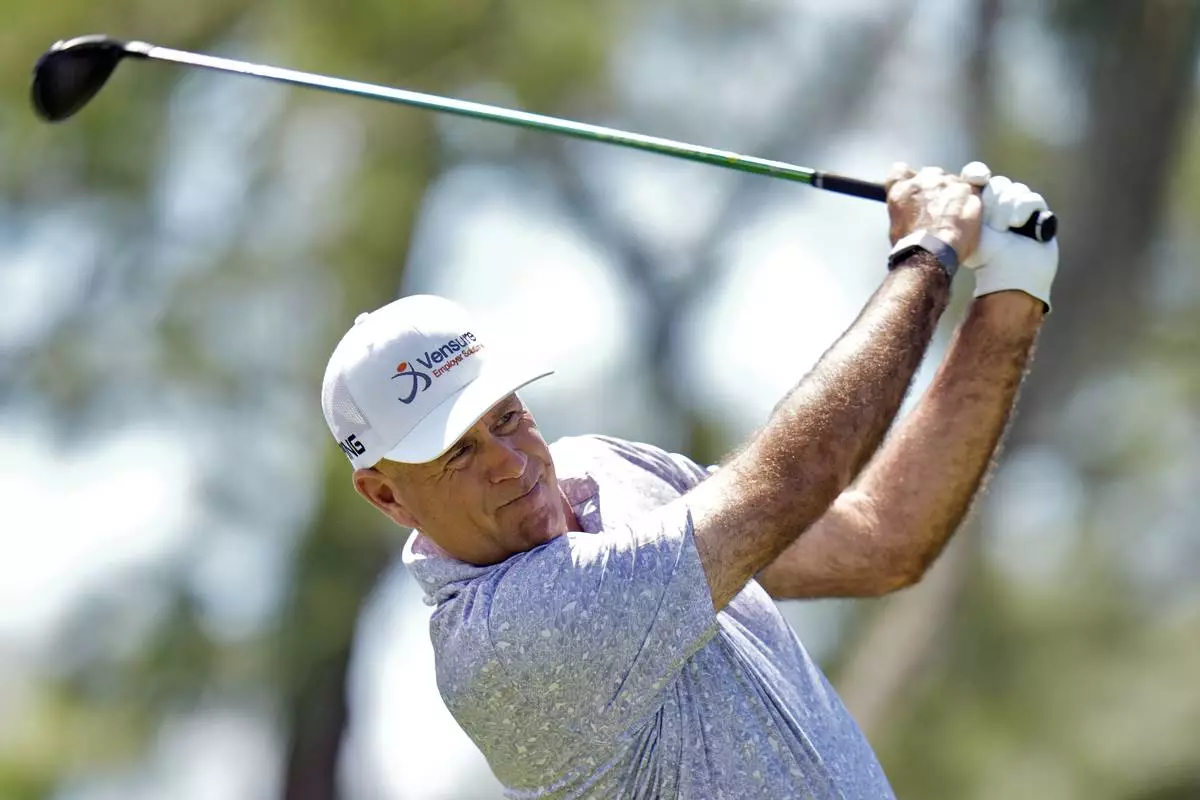
Stewart Cink tees off on the sixth hole during the third round of the Valspar Championship golf tournament Saturday, March 23, 2024, at Innisbrook in Palm Harbor, Fla. Golfers are in the sun as much if not more than players in other sport. It can be as many as eight hours a day. And there is renewed emphasis on protecting their skin. (AP Photo/Chris O'Meara)
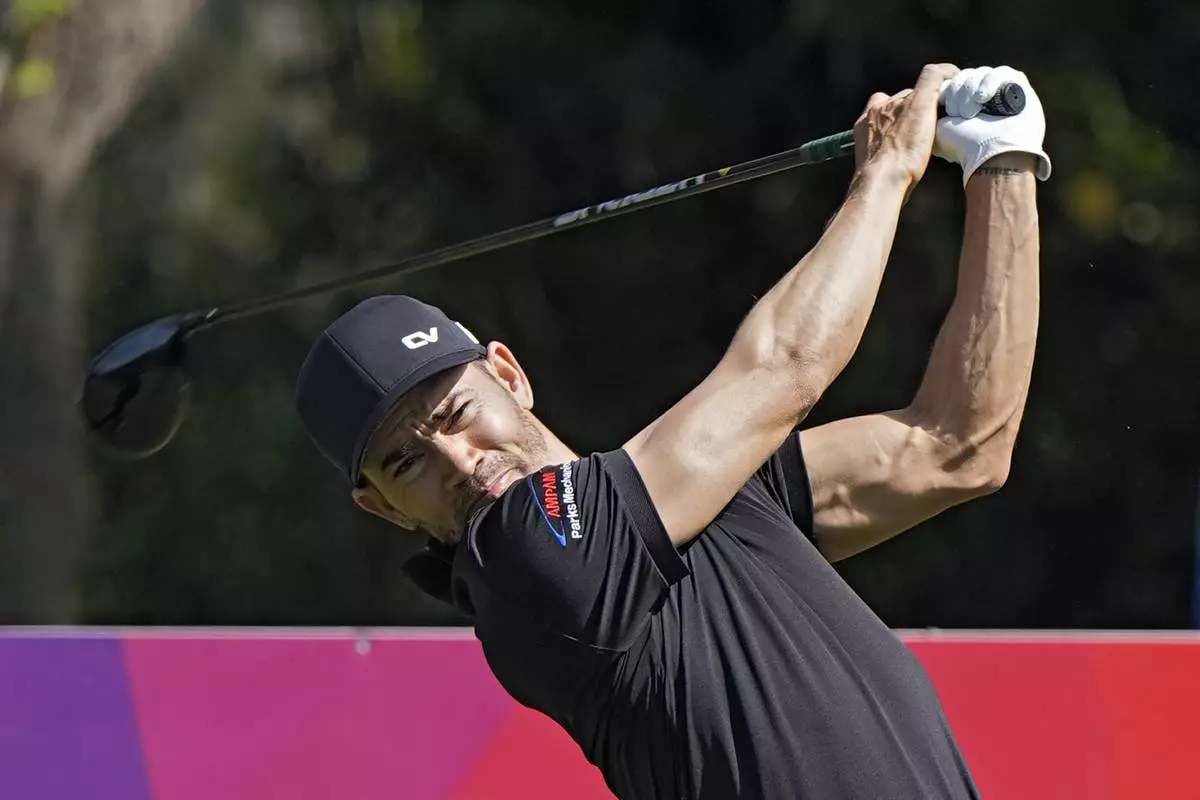
Camilo Villegas tees off on the 11th hole during the first round of the Valspar Championship golf tournament Thursday, March 21, 2024, at Innisbrook in Palm Harbor, Fla. Golfers are in the sun as much if not more than players in other sport. It can be as many as eight hours a day. And there is renewed emphasis on protecting their skin. (AP Photo/Chris O'Meara)













